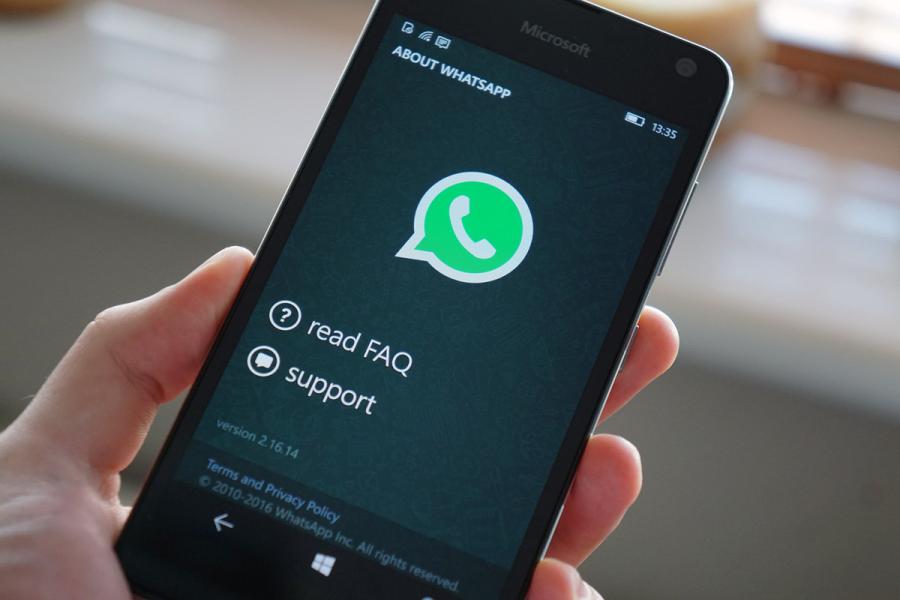
How Momo shows us that anyone can dig in our data
Momo is an urban legend that has been attributed to a curse, a hacker and even a maniac. What is it and does it know everything about us? Is it just a hoax? And even if it is fake news, can we learn something from it?
Momo is reported to be a horrifying new contact, which can suddenly appear in your contact list in WhatsApp. As the story goes, the new contact would immediately try to start a conversation with you, or would force you to call. Momo is alleged to write stock phrases that cannot leave you uninterested and does this repeatedly until you reply. After a few messages, or a WhatsApp call with creepy noises at the other end, Momo texts you that she knows everything about you. To prove that, she mentions your name, address, family members, pet name and other personal information. Is this possible?
The mysterious Momo
The story of Momo allegedly starts in Japan. The creepy image she has as her profile picture is, in a nutshell, a sculpture created by the Japanese special effects company Link Factory. It is a hybrid of a woman and a bird. While the picture is used by Momo, there does not appear to be a link between her and the company.
Momo is said to be able to read our MAC address, the unique physical identifier of the device.
The fact that Momo could know your name and personal information does not make it a medium, or a Big Brother. It can - if it is not a total hoax - probably be much simpler. One of the stories is, that originally Momo, was a bot using a Japanese phone number launching a terrifying virus, which was said to spread worldwide within a couple of weeks. But when that would be true, is it possible that it has access to all that information about the people it targets?

The sculpture by Link Factory
Momo vs. our data
As I alteadu mentioned, there are many theories on the internet about Momo. One of these stories traces Momo to the 'creepy' subreddit, others refer to one person trying to scare people.
Leaving aside the assumption that it is a demon living in our phones, the more realistic explanation is - again if it is true - that by making us reply and open the media files she sends us, Momo is able to read our MAC address, the unique physical identifier of the device. It gives away specific information, for example your location.
Your phone can also be hacked with the help of this address. This could explain how Momo is capable of sharing pictures which have never appeared online from your Gallery. Momo, even if it is just an Urban Legend, is best understood as a warning on the vurnerability of privacy in a digitally networked society.
There is also a less advanced way in which 'Momo' could find information about you. Let us start with the fact that everything happens in WhatsApp, the platform where your basic information is already mentioned. When contacting you, Momo is alleged to already know your phone number, name and it can see your profile picture. This is a good starting point that lets it dig deeper. With this basic knowledge, it can easily finds more information about you in Google and sends back pictures and facts that she sees on Facebook, Instagram, your blog, or any other source.
That Momo seems to live in WhatsApp adds 'realism' to the story. The app has access to your microphone, images, camera and location. The bot is therefore, at least in theory, able to use your WhatsApp account against you, collecting information about you through the app.

WhatsApp interface
The Momo challenge
After a few days of the bot’s activity, the Momo account was allegedly disabled. However, the story continues. In the wake of Momo-the bot, numerous Momo phone numbers were, fake and not, said to appear online.
This is said to have started a new movement, also known as "the Momo challenge", in which many people tried to contact her. It got spread further by bloggers filming their communications with it and posting them online. This 'Momo challenge' has recently been debunked as fake news.
The Urban legend on Momo and the Momo challenge teaches us a valuable lesson. To be careful whom you text or respond to in WhatsApp or similar networks. To avoid accepting media files from those who are not in your contact list. To double check the information you have about yourself on your social media, or in the cloud.
And, of course, by texting the bot you could already willingly sign up for this information collection. Multiple people complained that after contacting Momo, someone tried to hack their social media accounts.
Momo, urban legend becomes a threat
The latest theory about Momo is that all of this was a promotion campaign for some new horror movie. If so, it was a great way to capture people's attention. But what lessons can be drawn from such an urban legend?
False or not, at least, it should make us, once again, realize how vulnerable one can be, sharing and saving information on the web.